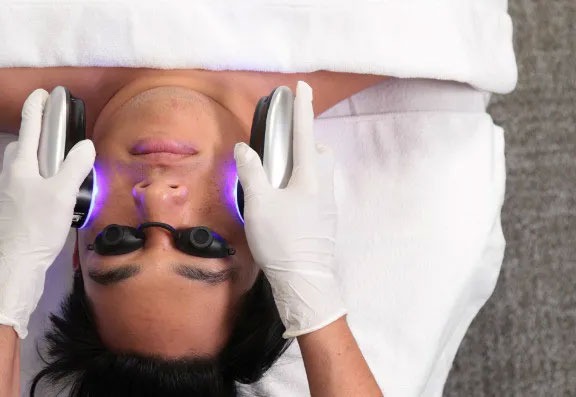Hydrafacial treatment is a great treatment to revive dull skin, exfoliate dead skin cells and generally improve your skin condition. However, if you suffer from frequent breakouts, oily and congested skin, then Hydrafacial is a great treatment option for you.
Hydrafacial is often used to tackle mild to moderate acne (as well as acne scars), with fantastic results.
Hydrafacial usually involves a six-step process but there are so many options now for all skin types, especially acne-prone oily skin and sensitive skin.
The most common is the 6-step process but for acne-prone skin, the 7-step treatment with the Murad clarifying booster is usually recommended. This is usually called a signature treatment but names will vary from clinic to clinic.
The 6-step treatment to hydrate your skin includes:
The patented Vortex delivery system used allows for deeper exfoliation in less time, making it a really efficient treatment option for glowing skin!
To further manage acne with Hydrafacial, personalised modifications can be made to give you maximum skin hydration for any skin type.
Acne treatment will include the Blue LED Light Therapy Enhancement, which can be added to the Hydrafacial device to target and disrupt p.acnes bacteria while improving the appearance of oily and congested skin.
Specialised tips can also be used, giving various degrees of exfoliation depending on your needs, while solutions with specific ingredients proven to tackle acne can be directly delivered to the skin to decongest and rejuvenate, for a fresh-faced appearance. To do this your practitioner can add the Beta HD to the deep cleanse and exfoliation stage as this has additional salicylic acid to control oil production and honey extract which is antibacterial and anti-inflammatory.

How Effective Is Hydrafacial at Treating Acne-Prone Skin?
Hydrafacial has been reported to make a significant difference to acne-prone skin; reducing oiliness and congestion, minimising pores, removing dead skin cells and smoothing the skin’s surface for radiant skin.
A recent study of regular treatments with Hydrafacial featuring blue LED lights found that skin appeared healthier and more radiant, observed that skin was clearer and that skin looked less oily and congested.
It’s important to note that whilst Hydrafacial is generally safe for most skin types, Hydrafacial is generally only recommended for mild to moderate acne.
Your practitioner may advise having a Hydrafacial in combination with other treatments for optimum results.

To really reduce acne, practitioners generally recommend a course of six to eight HydraFacials for the most effective results. These could be every two weeks, with maintenance treatments monthly. Your practitioner will create a personalised plan to hydrate your skin, remove dead skin cells, even skin tone, skin texture and leave you with smoother skin.
On top of in-clinic HydraFacials, daily cleansing and weekly exfoliating are advised but most importantly you need to be using BHA oil-controlling acids in products such as toners. A hyaluronic acid-based serum is what practitioners would usually recommend for oily/acne-prone skin.
Of course, using sunscreen, drinking lots of water, eating a healthy diet and refraining from smoking are always recommended.
Usually £95-£220, depending on your location and the experience of your practitioner. Courses of Hydrafacial will generally work out cheaper, speak to your practitioner who will be able to come up with a skin health treatment plan for you.
Clinics will often do special discounts or deals, so keep an eye out for these!
Book a Hydrafacial For Acne Treatment
I would be approaching 50 soon. I am finding myself increasingly concerned how do I maintain my skin and prepare myself for when I am older...
What “Tech Neck” really means: how head posture from screen use causes horizontal neck lines.
A recent investigation by 5 News has raised alarm over UK clinics using illegal human-derived exosomes in so-called “next-gen” facials - the latest TikTok-fuelled trend promising younger, smoother skin.
Hey, wait!
Before you go.....
Let's stay in touch, pop your details here and we'll send our editor's hand-picked updates on your fave subjects.